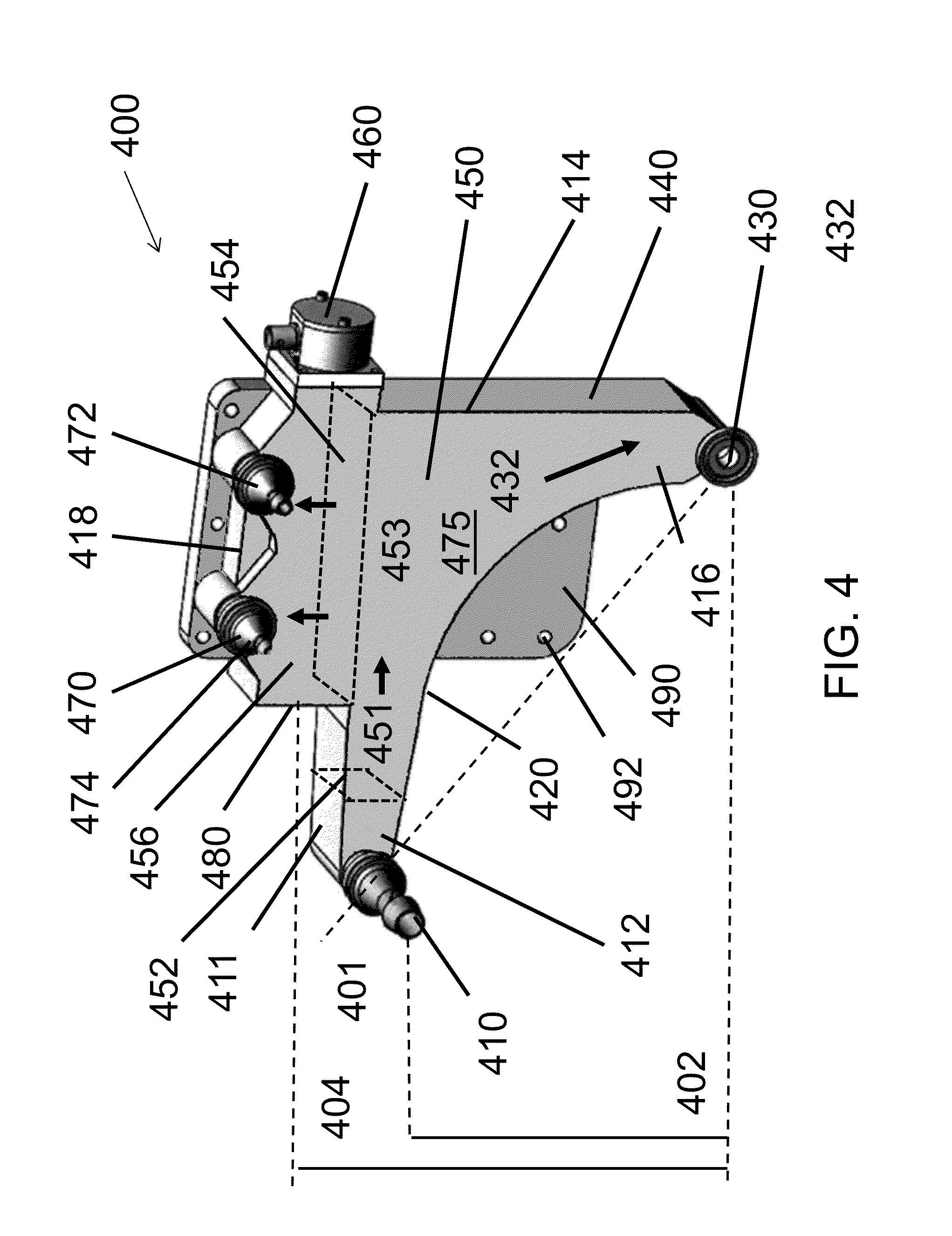Acoustic perfusion devices
a perfusion device and acoustic technology, applied in the field of biotechnology, can solve the problems of high start-up cost of fed-batch bioreactor, high cost of cell retention system, and high complexity of perfusion process, so as to improve productivity and growth, high start-up cost, and large volume
- Summary
- Abstract
- Description
- Claims
- Application Information
AI Technical Summary
Benefits of technology
Problems solved by technology
Method used
Image
Examples
example 1
[0194]FIG. 18 shows an experimental setup for an acoustic perfusion device as described in detail above. This acoustic perfusion device is very similar to that illustrated in FIG. 5, except the bottom wall is not curved, but rather runs horizontally from the first end and then angles directly to the outlet port. Tubes are connected to the inlet port, outlet port, and the two collection ports. A pump is also visibly fluidly connected to the outlet port.
[0195]FIG. 19 is a picture of another acoustic perfusion device of the present disclosure, similar to the embodiment shown in FIG. 5, having two ultrasonic transducers and a concave bottom wall leading from the inlet port to the outlet port at the bottom end of the device. A cell containing fluid mixture is also present in the device. In this picture, acoustic standing waves are created in the collection zone between the reflector and first and second transducers as described above. The acoustic field generated thereby is indicated by ...
example 2
[0206]FIG. 27 shows another experimental setup for an acoustic perfusion device similar to that illustrated in FIG. 8. Tubes are connected to the inlet port, outlet port, and the collection port.
[0207]The device was tested at a transducer voltage of 40V peak to peak, a perfused flow rate of 15-30 mL / min, and a recirculation flow rate of 2 L / min. Samples were taken every 45-60 minutes, and the cell retention rate was determined. FIG. 28 shows the results. The y-axis is the retention, stated in terms of percentage (calculated by comparing the output cell count with the input, or bioreactor / culture cell count). The x-axis is both the applied DC voltage (in V) and the perfused, or harvest, flow rate (in mL / min); it is merely coincidental that the range of numeric values for V and mL / min are the same. The cell retention efficiency remained above 95% for perfused flow rates up to 20 mL / min, and remained above 90% up to about 25 mL / min. FIG. 33 is a composite picture showing the device in ...
example 3
[0213]Another way of explaining the operation of the acoustic perfusion device can be understood by looking at the results of a numerical study. In the numerical study, two fluids with differing effective acoustic properties (i.e., speed of sound and density), were modeled with an interface between them in COMSOL, a numerical simulation software. The acoustic field is calculated and therefrom the lateral radiation force acting on a particle in the direction of the fluid velocity is calculated using Gorkov's equation.
[0214]FIG. 34 shows the geometry of the simulation, utilizing a piezoelectric transducer, steel reflector, aluminum housing, and two fluids: the first fluid being water within the acoustic field, simulating the clarified fluid, and the second fluid being a 15% concentration of CHO cells in water solution outside of the acoustic field, the second fluid having a higher density and higher speed of sound than the water fluid and simulating the bioreactor fluid containing the...
PUM
| Property | Measurement | Unit |
|---|---|---|
| Fraction | aaaaa | aaaaa |
| Fraction | aaaaa | aaaaa |
Abstract
Description
Claims
Application Information
 Login to View More
Login to View More - R&D
- Intellectual Property
- Life Sciences
- Materials
- Tech Scout
- Unparalleled Data Quality
- Higher Quality Content
- 60% Fewer Hallucinations
Browse by: Latest US Patents, China's latest patents, Technical Efficacy Thesaurus, Application Domain, Technology Topic, Popular Technical Reports.
© 2025 PatSnap. All rights reserved.Legal|Privacy policy|Modern Slavery Act Transparency Statement|Sitemap|About US| Contact US: help@patsnap.com



